40 found, showing page 2 of 3
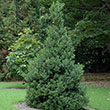
The 'Oakland' holly is prized for its uniquely-toothed foliage and dense, conical growth habit. It will reach 15-20' tall and 12-15' wide at maturity. Self-pollinating.
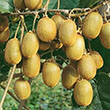
September Sun' produces large, flavorful fruits against colorful foliage. It can grow 10-15' tall and wide when trained on a trellis. Needs a hardy male kiwi for pollination.
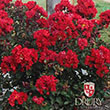
The 'Colorama Scarlet' is a stunning variety with large clusters of vibrant red flowers that emerge and summer and persist into fall. Exfoliating bark in the late fall and winter adds seasonal interest. This variety will get 15-20' tall and 10-12' wide.
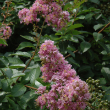
Height: 20 feet
Spread: 15 feet
Sunlight: full sun, partial shade
Hardiness Zone: 6b
Other Names: Crape Myrtle, Crepe Myrtle
Description:
This attractive ornamental shrub or small tree produces volumes of light lavender-pink frilly blooms in summer, followed by vibrant red fall foliage; captivating focal point for the garden or border
Ornamental Features:
Muskogee Crape Myrtle is covered in stunning panicles of lavender frilly flowers with pink overtones at the ends of the branches from early to late summer. It has attractive dark green deciduous foliage which emerges coppery-bronze in spring. The oval leaves are highly ornamental and turn red in fall.
Landscape Attributes:
Muskogee Crape Myrtle is a dense multi-stemmed deciduous tree with a more or less rounded form. Its relatively fine texture sets it apart from other landscape plants with less refined foliage.
This is a relatively low maintenance tree, and is best pruned in late winter once the threat of extreme cold has passed. It has no significant negative characteristics.
Muskogee Crape Myrtle is recommended for the following landscape applications:
- Accent
- Mass Planting
- Hedges/Screening
- General Garden Use
Planting & Growing:
Muskogee Crape Myrtle will grow to be about 20 feet tall at maturity, with a spread of 15 feet. It has a low canopy with a typical clearance of 3 feet from the ground, and is suitable for planting under power lines. It grows at a fast rate, and under ideal conditions can be expected to live for approximately 20 years.
This tree does best in full sun to partial shade. It prefers to grow in average to moist conditions, and shouldn't be allowed to dry out. It is very fussy about its soil conditions and must have rich, acidic soils to ensure success, and is subject to chlorosis (yellowing) of the foliage in alkaline soils. It is highly tolerant of urban pollution and will even thrive in inner city environments. This particular variety is an interspecific hybrid.
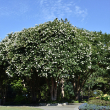
Height: 25 feet
Spread: 20 feet
Sunlight: full sun partial shade
Hardiness Zone: 5b
Other Names: Crape Myrtle, Crepe Myrtle
Description:
An ornamental tree that is covered with papery panicles of white flowers on weeping branch tips; decorative bark exfoliates to expose layers of color; shows good resistance to powdery mildew; heat and drought tolerance; does not like to be over-fertilized
Ornamental Features:
Natchez Crape Myrtle is bathed in stunning panicles of white frilly flowers at the ends of the branches from early to late summer. It has attractive dark green deciduous foliage which emerges coppery-bronze in spring. The oval leaves are highly ornamental and turn orange in fall. The peeling brown bark is extremely showy and adds significant winter interest.
Landscape Attributes:
Natchez Crape Myrtle is a dense multi-stemmed deciduous tree with a shapely form and gracefully arching branches. Its average texture blends into the landscape, but can be balanced by one or two finer or coarser trees or shrubs for an effective composition.
This is a relatively low maintenance tree, and is best pruned in late winter once the threat of extreme cold has passed. Deer don't particularly care for this plant and will usually leave it alone in favor of tastier treats. It has no significant negative characteristics.
Natchez Crape Myrtle is recommended for the following landscape applications:
- Accent
- Mass Planting
- Hedges/Screening
- General Garden Use
Planting & Growing:
Natchez Crape Myrtle will grow to be about 25 feet tall at maturity, with a spread of 20 feet. It has a low canopy with a typical clearance of 4 feet from the ground, and is suitable for planting under power lines. It grows at a fast rate, and under ideal conditions can be expected to live for 40 years or more.
This tree does best in full sun to partial shade. It prefers to grow in average to moist conditions, and shouldn't be allowed to dry out. It is very fussy about its soil conditions and must have rich, acidic soils to ensure success, and is subject to chlorosis (yellowing) of the foliage in alkaline soils. It is highly tolerant of urban pollution and will even thrive in inner city environments. This particular variety is an interspecific hybrid.
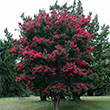
Height: 25 feet
Spread: 20 feet
Sunlight: full sun partial shade
Hardiness Zone: 6b
Other Names: Crape Myrtle, Crepe Myrtle
Description:
This attractive ornamental shrub or small tree is covered in striking coral-pink blooms in summer, followed by red-orange fall foliage; a captivating focal point for the garden or border
Ornamental Features:
Tuscarora Crapemyrtle is blanketed in stunning panicles of coral-pink frilly flowers with hot pink overtones at the ends of the branches from early to late summer. It has attractive dark green deciduous foliage which emerges coppery-bronze in spring. The oval leaves are highly ornamental and turn orange in fall. The mottled khaki (brownish-green) bark is extremely showy and adds significant winter interest.
Landscape Attributes:
Tuscarora Crapemyrtle is a dense multi-stemmed deciduous tree with a more or less rounded form. Its relatively fine texture sets it apart from other landscape plants with less refined foliage.
This is a relatively low maintenance tree, and is best pruned in late winter once the threat of extreme cold has passed. It has no significant negative characteristics.
Tuscarora Crapemyrtle is recommended for the following landscape applications:
- Accent
- Mass Planting
- Hedges/Screening
- General Garden Use
Planting & Growing:
Tuscarora Crapemyrtle will grow to be about 25 feet tall at maturity, with a spread of 20 feet. It has a low canopy with a typical clearance of 4 feet from the ground, and is suitable for planting under power lines. It grows at a fast rate, and under ideal conditions can be expected to live for 50 years or more.
This tree does best in full sun to partial shade. It prefers to grow in average to moist conditions, and shouldn't be allowed to dry out. It is very fussy about its soil conditions and must have rich, acidic soils to ensure success, and is subject to chlorosis (yellowing) of the foliage in alkaline soils. It is highly tolerant of urban pollution and will even thrive in inner city environments. This particular variety is an interspecific hybrid.
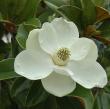
The 'Bracken' Brown' is an evergreen variety that is known for its glossy green leaves that have leathery-brown undersides. Large, white, fragrant blooms appear in late spring and attract a variety of pollinators.
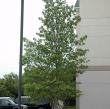
Sweetbay Magnolia. The Sweetbay magnolia is a native variety that will reach 15-25' tall and wide at maturity. It produces large, white, fragrant blossoms that appear in early summer and attract a variety of beneficial pollinators.
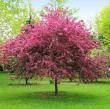
The 'Prairifire' crabapple is a rounded, mid-sized variety that makes quite an impact. Vibrant reddish-pink blooms explode in mid-spring, covering every inch of the branches. In the fall, glossy red fruits appear and persist for months without dropping. This variety gets 15-20' tall and wide and is a perfect specimen tree.
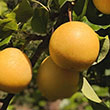
The 'Asian Combo' pear is a self-pollinating variety that combines both early and late-season bloomer to extend your harvest season. It combines both yellow and brown russett pears. Grows 12-15' tall and 6-8' wide.
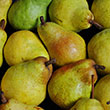
The 'European Combo' pear grows 15-20' tall and 8-12' wide. It combines 3-4 European pear varieties to extend the harvest season. Fruits ripen in summer and fall.
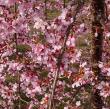
Striking, pink flowers cascade along weeping branches in the spring before foliage emerges. This variety will grow 12-15' tall and wide.
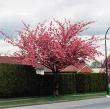
The 'Kwanzan' cherry produces large, ruffled pink blooms in early spring before foliage emerges, creating a vibrant display of color. It will reach 25-30' tall and wide and has an upright growth habit.
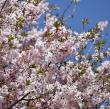
The 'Autumnalis' has an upright, arching growth habit and will reach 25-35' tall and 20-30' wide. It produces clusters of pinkish-white, ruffled flowers in early spring before its foliage emerges.

PRUNUS SUB 'PENDULA' DBL 15G
40 found, showing page 2 of 3